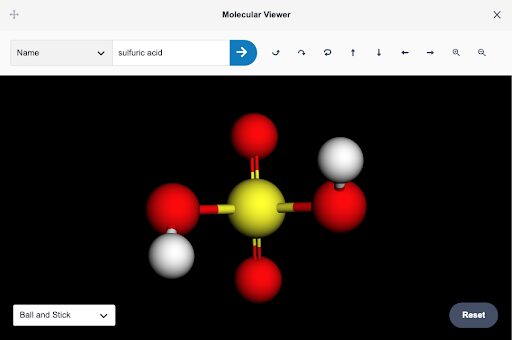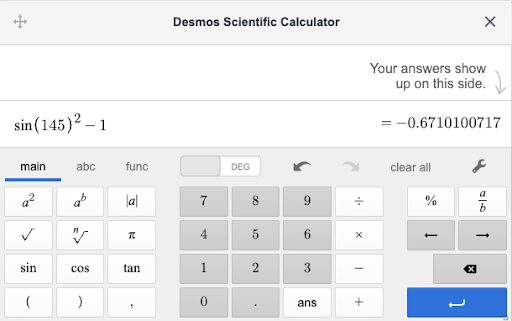
One such tool is Equatio, a digital authoring tool that allows users to create STEM notation in digital environments. Digital Promise partnered with Equatio, teachers, and students in a research-practice-industry partnership (RPIP) to identify ways to make STEM education more inclusive and accessible. We were interested in learning how digital tools like Equatio can enhance accessibility by supporting the design of multiple means of representation and multiple means of action and expression, two key guidelines of Universal Design for Learning.
As part of this RPIP, we partnered with undergraduate learners to understand their experiences using Equatio in their STEM courses. Our undergraduate partners identified several valuable features of Equatio, including tools for representing mathematics and science ideas as well as science-specific resources that support thinking and problem-solving.

The formula for kinetic energy, created using Equatio’s prediction feature by simply typing “kin” into the equation editor
A popular feature among our undergraduate partners was Equatio’s equation editor, which includes a prediction feature that can easily find and create commonly used STEM formulas. Users type the beginning of the formula or its name to quickly pull up the entire formula without having to enter in each symbol. The library of formulas includes not only formulas used in mathematics, like the volume of a sphere, but also those used in science disciplines, like the formula for centripetal force in physics or the half-life formula in chemistry. It also includes important constants, like the speed of light (c) and Avogadro’s constant (NA), as well as chemical formulas for common compounds like sulfuric acid.
As one chemistry student described, “I don’t have to look [the formula] up on the internet or pull out my notebook to check my notes to find the formula. It’s very time efficient and allows me to focus on how to solve the actual problem.”
Equatio also includes science-specific tools, such as an interactive periodic table that allows users to click on any element to view a detailed description, properties like electronegativity, and even a photo of the element. One student partner said of the interactive periodic table, “It shows you the atomic mass and everything…it’s just all there…it’s so easily accessible.”

The interactive periodic table in Equatio provides detailed information about each element.
Another science-specific tool in Equatio is a molecular viewer that displays 3D visuals of various chemical compounds, helping learners better understand molecular structures.

A 3-dimensional rendering of sulfuric acid in Equatio’s molecular viewer
Additionally, Equatio provides a scientific calculator powered by Desmos, which allows users to perform calculations without leaving the window where they are working. The Desmos scientific calculator is also heavily adopted for use on assessments across the United States. When using this scientific calculator within Equatio, learners gain experience using the same calculator they can expect to see on STEM assessments, including Advanced Placement exams and state standardized assessments.

The Desmos scientific calculator is integrated into Equatio.
Universal Design for Learning guidelines emphasize the need to design multiple means of representation and multiple means of action and expression. The features above, especially the interactive periodic table and molecular viewer, use multiple media to help learners see and understand science concepts and structures.
Equatio’s other tools, such as the graphing utility from Desmos, offer a variety of options to construct and express their ideas across STEM disciplines. The predictive equation feature, in particular, helps learners generate and articulate STEM ideas more quickly and efficiently by removing some of the cognitive load associated with equation recall.
By integrating science and mathematics in digital tools, learners gain a broader set of resources for interpreting, analyzing, and expressing content in both science and mathematics, enhancing accessibility and strengthening the connections between these deeply connected STEM disciplines.
Learn more about this Research-Practice-Industry Partnership and the benefits of digital authoring tools.